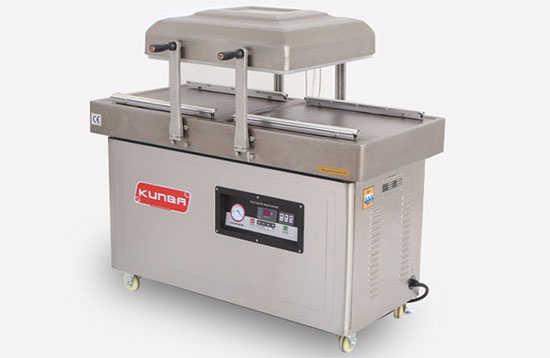
Under certain conditions, bacteria can grow in vacuum-sealed bags.
While vacuum sealing with a vacuum packer can help inhibit the growth of bacteria by removing oxygen and creating an airtight environment, it is not foolproof.
The vacuum seal of the vacuum sealer creates an oxygen-free environment, inhibiting the growth of aerobic bacteria that require oxygen to survive.
But there are some bacteria (called anaerobic bacteria) that can still thrive in low or no oxygen environments. These bacteria cause spoilage and can produce toxins that are harmful when eaten.
(1) Maintain good sanitary conditions
Wash hands, utensils and surfaces thoroughly before and after handling food to minimize the risk of bacterial contamination.
(2) Cook food properly
Cooking food to the proper internal temperature helps kill harmful bacteria, including anaerobic bacteria.
Use a food thermometer to make sure food is cooked to the recommended temperature for its type.
(3) Store food at proper temperature
Anaerobic bacteria thrive in temperature zones (between 40°F/4°C and 140°F/60°C).
Store food that is perishable after purchase or cooking in the refrigerator or freezer.
(4) Properly sealed
Before vacuum sealing with a vacuum sealer, make sure the sealed food is clean and free of bacterial contamination.
Avoid overfilling bags or containers to prevent liquid or moisture from hindering the seal.
(5) Control moisture content
Anaerobic bacteria need moisture to grow. Before storing or vacuum sealing, make sure there is no excess moisture in the food. The absence of moisture will help create an environment that is not conducive to bacterial growth.
(6) Monitor storage time
Vacuum sealing doesn't mean food won't spoil. Regularly check vacuum-sealed food for signs of spoilage, such as foul odors, discoloration, or changes in texture.
(7) Combined with other preservation methods
In order to inhibit the growth of anaerobic bacteria, we can use other preservation methods such as using additives such as salt, vinegar or acid marinade combined with vacuum sealing to inhibit bacterial growth.
Make sure the sealed food is clean and fresh before vacuum sealing, if it has been contaminated with bacteria before vacuum sealing, bacteria will grow in the sealed bag after sealing.
Bacteria need moisture to grow and multiply, and if the moisture is not excluded for sealing, liquid or moisture in a vacuum-sealed bag may provide a suitable environment for bacteria to multiply.
Temperature plays an important role in bacterial growth and should be promptly refrigerated or frozen after vacuum sealing to maintain freshness and inhibit bacterial growth.
Even with vacuum sealing, storage time affects the risk of bacterial growth and it is important to consume within a reasonable amount of time.

GET A QUOTE